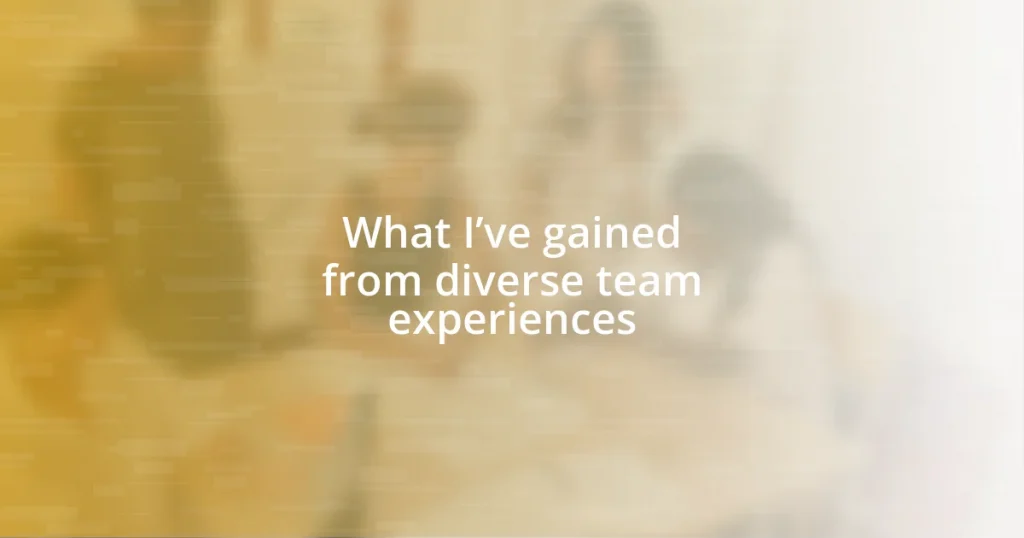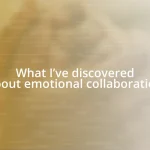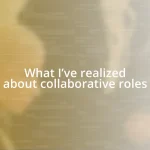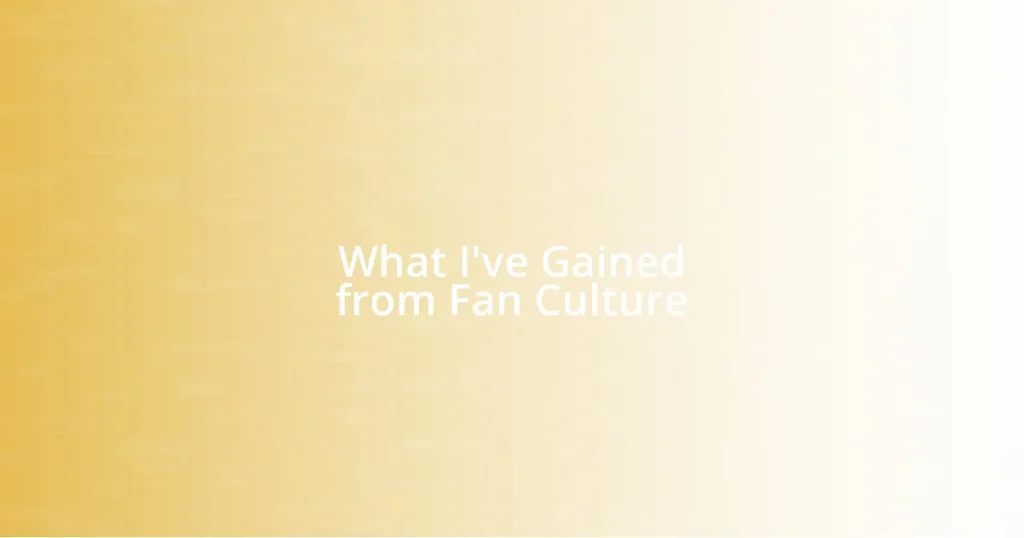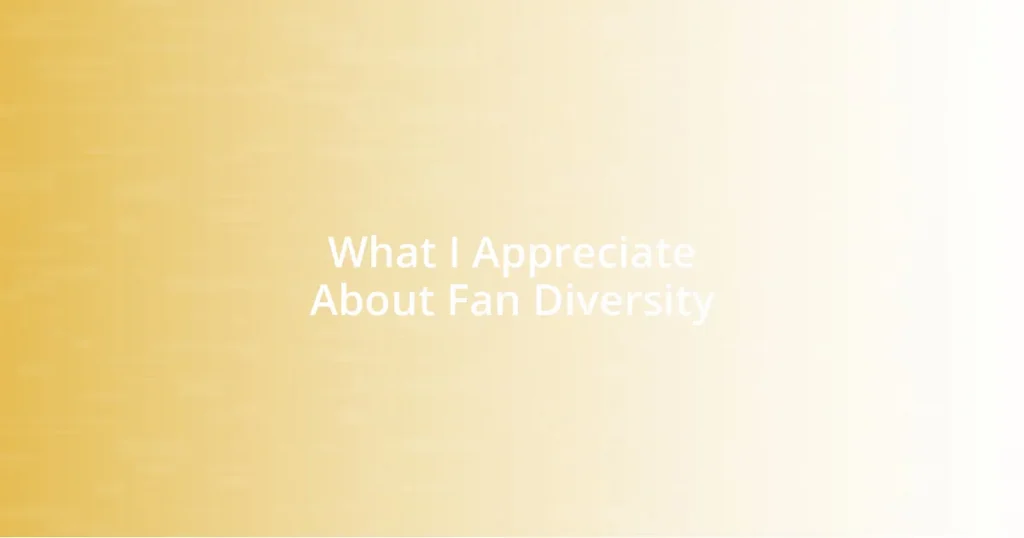Key takeaways:
- Emphasizing active listening and inclusivity can transform team dynamics and lead to innovative solutions that might otherwise be overlooked.
- Diverse perspectives enhance problem-solving, increase creativity, and improve decision-making, fostering a more vibrant collaborative atmosphere.
- Recognizing and leveraging individual strengths while maintaining cultural sensitivity and flexibility cultivates resilience and drives successful team outcomes.
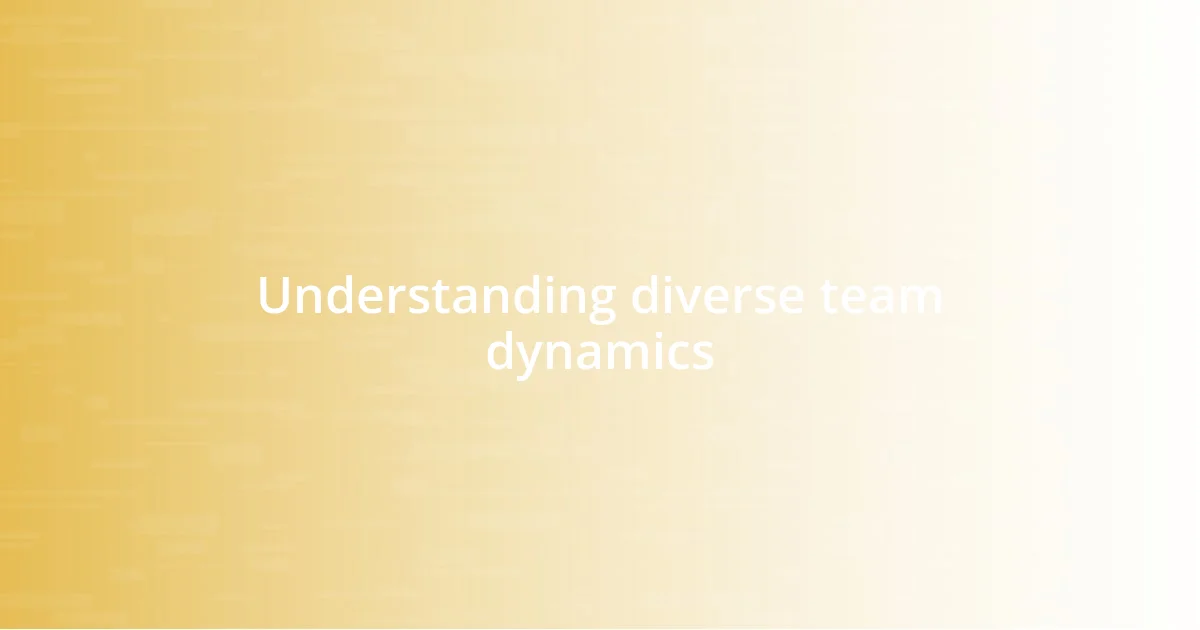
Understanding diverse team dynamics
Diverse team dynamics are fascinating to navigate because they reveal the unique strengths and perspectives each member brings. I remember working on a project where my team included individuals from various cultural backgrounds. The way we approached problems was entirely different; one person’s method was driven by collectivism, while another emphasized individual accountability. This blend often sparked healthy debates that led us to breakthrough solutions I hadn’t anticipated.
Through these interactions, I learned the importance of active listening. Have you ever been in a discussion where, instead of adding your thoughts, you simply absorbed what others were saying? There was a moment when I did just that during a brainstorming session. I stayed quiet while a quieter teammate shared an innovative idea that completely reshaped our strategy. It hit me – sometimes, the most valuable insights come from those who might otherwise be overlooked.
In my experience, fostering an inclusive environment where all voices are heard can transform team dynamics significantly. I recall a situation where a team member hesitated to speak up, unsure if her input would matter. When I encouraged her to share, not only did we gain a valuable perspective, but it also boosted her confidence. That moment reinforced my belief that understanding diverse team dynamics goes beyond merely coexisting; it’s about creating space for every voice to contribute.
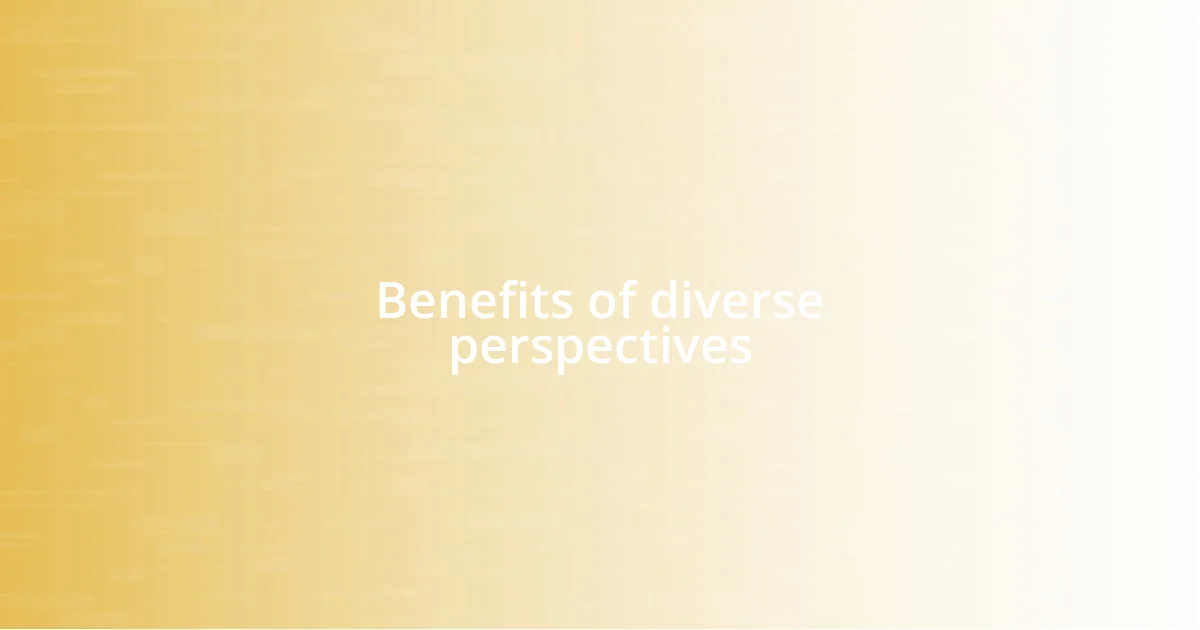
Benefits of diverse perspectives
Diverse perspectives can lead to innovation and creativity that might otherwise not emerge. I recall collaborating with a colleague from a technical background while working with a marketing team. While I was brainstorming traditional marketing tactics, they introduced cutting-edge technology that shifted our entire approach. That unique perspective allowed us to craft a campaign that not only resonated with our audience but also stood out in a crowded market.
Here are some compelling benefits of embracing diverse perspectives:
- Enhanced Problem Solving: Different viewpoints contribute to more comprehensive solutions, as they challenge the status quo.
- Increased Creativity: A mix of ideas fosters innovation and can lead to groundbreaking concepts and methods.
- Broader Market Understanding: Teams with diverse backgrounds can better understand and relate to a wider range of customers, enhancing product relevance.
- Improved Decision-Making: Varied opinions lead to more thorough discussions, resulting in well-rounded decisions that consider multiple angles.
- Higher Team Engagement: When team members feel their perspectives are valued, they are more likely to be invested in the team’s goals.
Diversity truly enriches the dialogue within teams, and I’ve witnessed firsthand how these varied perspectives create a more vibrant, exciting atmosphere for collaboration.
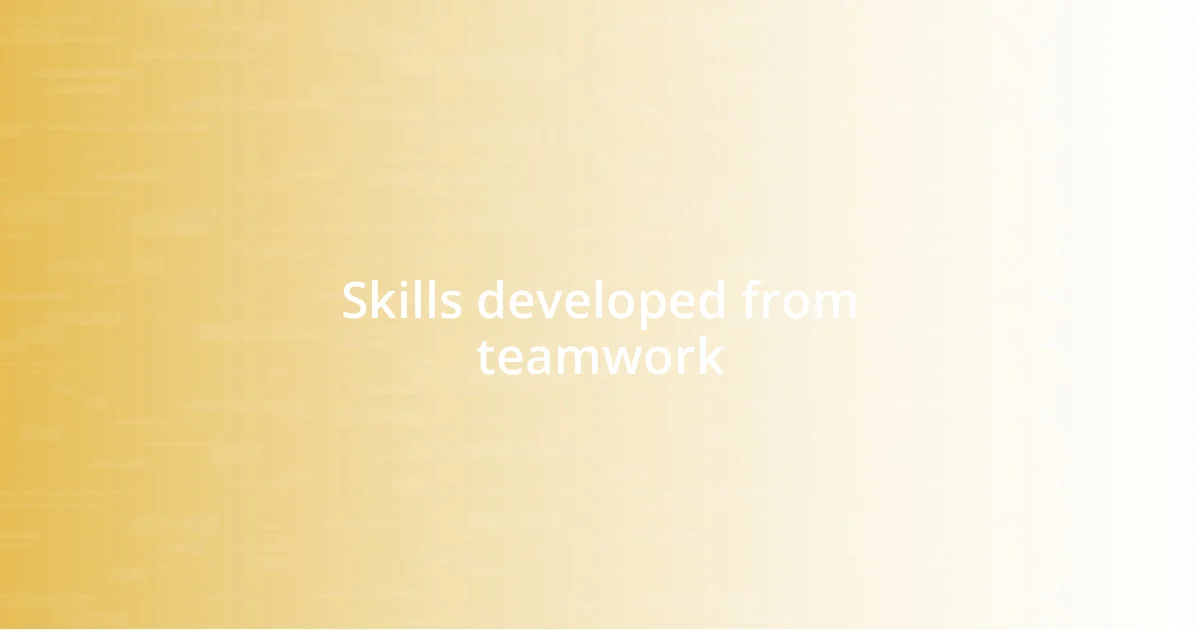
Skills developed from teamwork
In teamwork, I’ve discovered that adaptability is a cornerstone skill. I remember a time when our project suddenly pivoted due to unexpected feedback. The initial plan was comforting, but the shift pushed me out of my comfort zone. I had to quickly recalibrate my approach while collaborating with teammates who were equally flexible. This experience taught me to embrace change and view challenges as opportunities, which has made me far more agile in both my professional and personal life.
Another key skill developed through teamwork is conflict resolution. I’ve encountered situations where differing opinions clashed, creating tension within the group. I distinctly recall a debate over design choices that escalated quickly. Instead of avoiding the issue, I proposed a structured discussion to address our differing views openly. Not only did we arrive at a consensus, but I also learned the art of negotiation and the importance of finding common ground. These skills became invaluable, allowing me to foster collaboration even in the most challenging circumstances.
Finally, I believe communication skills are honed immensely through teamwork. During a recent collaborative project, it became clear that clarity in communication can make or break your team’s success. I found myself translating complex ideas into simpler terms for team members who didn’t share my technical background. This not only helped the team grasp the concepts better but reinforced my understanding too. It was a rewarding cycle of learning, prompting me to refine my communication style to be more inclusive and effective.
| Skill | Experience |
|---|---|
| Adaptability | Learning to embrace change and adjust plans in response to new information. |
| Conflict Resolution | Facilitating open discussions to address differing opinions and finding common ground. |
| Communication Skills | Translating complex ideas into simpler language for better team understanding. |
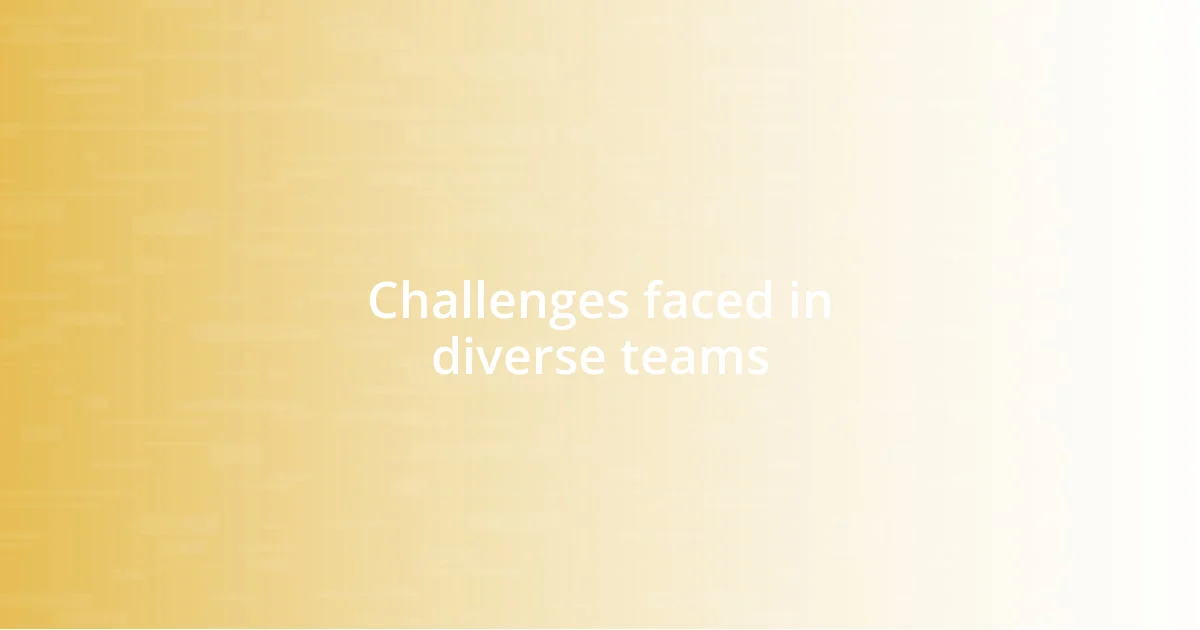
Challenges faced in diverse teams
It’s interesting how challenges can sometimes take the forefront in diverse teams. One of the main obstacles I’ve encountered is the occasional barrier in communication. I remember a project where team members came from various cultural backgrounds. While we all had great ideas, misunderstandings often arose due to different ways of expressing thoughts. This left me feeling frustrated at times, but it also encouraged me to develop deeper empathy for others’ perspectives. Have you ever felt that gap in communication? It’s eye-opening when you recognize that it’s not about who’s right or wrong, but rather how to bridge those differences.
Another significant challenge is managing differing work styles. I once worked on a group project where one colleague preferred a structured, orderly approach while another thrived in a more flexible, spontaneous environment. Initially, this led to tension, with deadlines being missed and confusion in responsibilities. It was discouraging, and I often found myself wondering how we could channel these differences into something productive. Eventually, we found a rhythm by openly discussing our preferences and crafting a compromise that acknowledged everyone’s strengths. That experience taught me the importance of flexibility and understanding in a team setting.
However, I can’t ignore the emotional aspect that comes with navigating diverse teams. There can be a sense of isolation if you feel your voice isn’t heard, especially in a larger group. There was a time when I felt sidelined during discussions, overshadowed by louder personalities. This made me doubt my contributions, creating a cycle of insecurity. Realizing that many team members feel this way at some point pushed me to advocate for a more inclusive team dynamic, where everyone felt empowered to share their thoughts. Have you ever felt that pull between wanting to speak up and fearing not being heard? It’s a crucial hurdle that often gets overlooked, yet it can determine a team’s overall success.
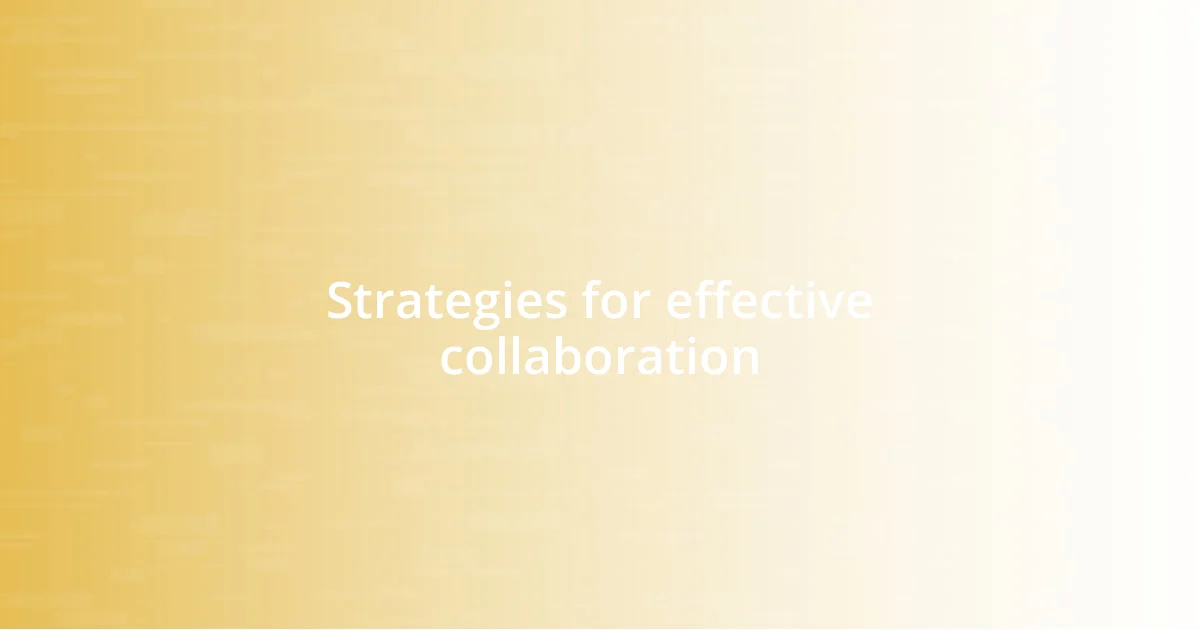
Strategies for effective collaboration
One effective strategy for collaboration is establishing clear roles and responsibilities early on. I once joined a team that launched into brainstorming without defining who would handle what. It felt chaotic, and I could sense the frustration building as tasks overlapped and deadlines loomed. When the project manager finally outlined each member’s duties, everything clicked into place. The clarity not only reduced confusion but also fostered accountability, making it easier to trust one another and focus on our contributions.
Another strategy that stands out for me is the practice of regular check-ins. In one of my projects, we made it a point to touch base weekly. These sessions transformed our workflow. I recall sharing progress updates, discussing roadblocks, and celebrating small wins. It became a safe space where we could express concerns and offer support. This practice not only kept everyone aligned but also nurtured connections within the team, creating a sense of belonging and shared purpose. How often do you check in with your team? Sometimes, these little moments can change the entire dynamic.
Lastly, I learned the power of open feedback. Early in my career, I held back on sharing feedback with my colleagues, fearing it would hurt their feelings. Then, I participated in a session where feedback was viewed as a gift. I dared to express my thoughts constructively, and the response was overwhelmingly positive. I now realize that when team members invite feedback, it cultivates an environment of growth and mutual respect. Have you ever hesitated to give or receive feedback? Embracing this practice can dramatically elevate collaboration, turning it into a dynamic exchange of ideas and perspectives.

Personal growth through diversity
When I reflect on my personal growth through diverse team experiences, one key realization stands out: adaptation is crucial. I remember being part of a project where perspectives diverged widely. At first, I struggled with conflicting ideas and approaches. But as I opened myself up to those differences, I started to see creativity blossom in ways I had never imagined. Have you ever felt that moment when a new idea clicks in, enriching your vision? It’s astonishing how diversity can be a catalyst for innovation.
Another aspect I’ve gained is the practice of active listening. Early in my career, I often felt the need to jump in with my thoughts, not fully grasping the importance of absorbing others’ viewpoints. In a particularly dynamic team discussion, a colleague offered an unconventional solution that I initially brushed aside. However, after taking a moment to listen, I realized the brilliance in that idea. It transformed our project’s direction, illustrating that each voice adds value. How can we truly innovate if we don’t give others the space to contribute?
Moreover, I’ve come to appreciate emotional intelligence as a vital component of teamwork. In one instance, a teammate was visibly struggling with the workload, and I felt hesitant to approach them. Eventually, I gathered the courage to check in. That simple act opened up a dialogue that revealed not just stress but also creative blocks we could tackle together. It taught me that fostering relationships and being attuned to each other’s feelings can strengthen our collaboration. Have you ever hesitated to reach out, only to find that your support could change everything? Understanding this connection reinforces the idea that diversity is not just about backgrounds, but about the spectrum of emotions and experiences we each bring to the table.

Applying lessons in future teams
Recognizing the importance of cultural sensitivity is another lesson I aim to carry into future teams. I recall a project where I worked alongside colleagues from various backgrounds. We discovered that our different customs shaped how we approached deadlines and feedback. Instead of seeing these differences as barriers, we embraced them, learning to integrate various viewpoints into a cohesive working style. Have you ever navigated a similar situation? The experience taught me that valuing cultural differences can lead to stronger, more innovative outcomes.
In addition, I’ve learned about the significance of flexibility. During a particularly challenging project, our team faced hurdles that required a last-minute pivot in strategy. While it was stressful in the moment, we learned to trust each other’s instincts and iterate quickly. This taught me that adaptability is not just a survival skill but a pathway to discovering new solutions together. When have you had to change course unexpectedly? Embracing these shifts fosters resilience and can help teams thrive in uncertain environments.
Lastly, I’ve recognized the value of leveraging individual strengths. In one team, we mapped out our unique skills, which not only clarified roles but also energized everyone involved. It was inspiring to see how tapping into each person’s expertise allowed us to create synergies that we couldn’t have achieved alone. What strengths do you bring to your team, and how can they elevate your work? Encouraging this kind of alignment can foster an environment where collaboration becomes second nature.










